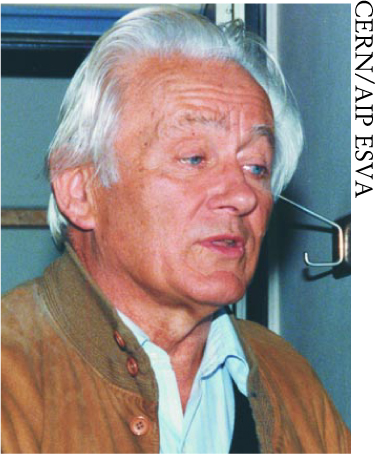Charpak, Garwin Propose Unit for Radiation Dose
DOI: 10.1063/1.1496368
Becquerels, curies, grays, rads, rems, roentgens, sieverts—even for specialists the units of radiation can get confusing. That’s why two eminent physicists, Georges Charpak of France, winner of the 1992 Nobel Prize in Physics, and Richard Garwin, an architect of the US hydrogen bomb and an outspoken advocate of arms control, are proposing the DARI as a unit of radiation dose they hope will help the public evaluate the risks associated with low-level radiation exposures.
The DARI, or Dose Annuelle due aux Radiations Internes, is the radiation humans can’t escape: It’s the annual dose due to radioactivity in the body, mainly primordial potassium-40, from the stardust that formed our Solar System, and carbon-14, created by interactions of cosmic rays with nitrogen in the atmosphere. The dose from this internal radioactivity, accounting for the biological effects of different decay particles, is about 0.17 mSv/y; the proposed unit is rounded up, so that 1 DARI = 0.2 mSv.
In their book Megawatts and Megatons: A Turning Point in the Nuclear Age? (Knopf, 2001; for a review, see Physics Today, April 2002, page 80
“We are living in a time when people want to terrorize people with radioactivity,” says Charpak. “They make a fuss because of an incident producing 10% of a DARI, or even 1% of a DARI.” With intrinsic internal radiation dose as a standard, he and Garwin hope that fears about nuclear energy will fade.
John Cameron, an emeritus medical physicist from the University of Wisconsin–Madison, prefers to compare radiation exposures to external background radiation. “You can tell a patient that the radiation from a mammogram is about equal to two months of just living,” he says. Natural background radiation is about 10 times the radiation from inside the body, although it depends on elevation and soil and so varies from place to place. “Our proposal is simpler,” says Charpak. “The amount of radioactivity in the human body is stable.”
Comparing exposures to internal or external background radiation is useful, says Hans-Georg Menzel, who heads CERN’s radiation protection group and is a member of the International Commission on Radiation Units and Measurements (ICRU), “but only for a particular purpose: trying to help the public at large and decision makers develop a more realistic perception of the risk associated with radiation exposure. But this approach is certainly not useful as a unit for measuring for medical and legal purposes.” Describing the risk of radiation by distributing the life-shortening effect of a fatal cancer over a large population, Menzel adds, “is appealing, but not a correct use of statistics. It is incorrect in the same way, but in the opposite sense, that some people make low radiation doses sound scary by multiplying very small doses with a large number of people exposed and so arrive at a high collective dose. I think it’s rather misleading.”
The DARI appears to be getting a warm reception in France, however. The French National Academy of Medicine has endorsed it, and a proposal is now in the hands of the ICRU. “I am satisfied,” says Charpak. “We have put the idea on the table. We’ll see what happens.”

Charpak
CERN/AIP FSVA


Garwin

More about the Authors
Toni Feder. American Center for Physics, One Physics Ellipse, College Park, Maryland 20740-3842, US . tfeder@aip.org
